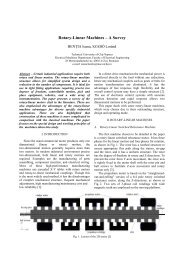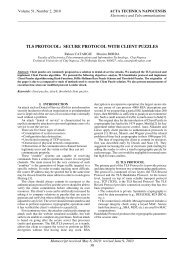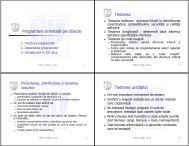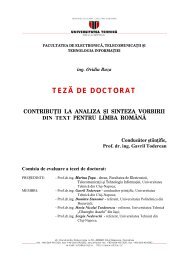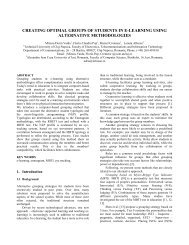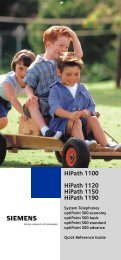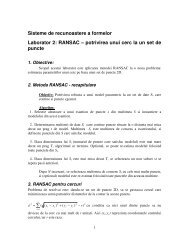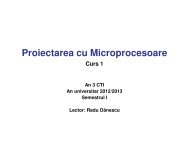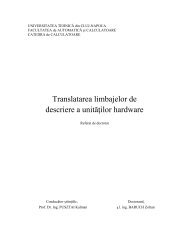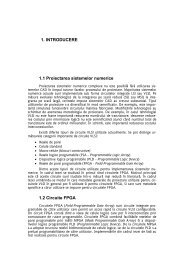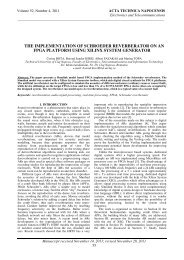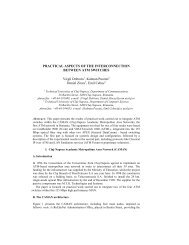LTE Emulator
LTE Emulator
LTE Emulator
Create successful ePaper yourself
Turn your PDF publications into a flip-book with our unique Google optimized e-Paper software.
<strong>LTE</strong> <strong>Emulator</strong> version 1.0 – technical report<br />
fading. Additional information regarding the generation of the mobile multipath radio channel<br />
are presented in paragraph 5.1.<br />
Fig. 4.1. Specification of OFDM and multipath propagation profile in the<br />
user interface of the simulator.<br />
The OFDM modulation is specified by the following parameters: the carrier (cell carrier)frequency,<br />
the frequency-separation between sub-carriers, the number of sub-carriers used for<br />
transmission and the guard-interval of the OFDM symbols. Figure 4.1. shows the user interface<br />
of the simulator used to set the specifications for the parameters of the OFDM modulation and of<br />
the multipath propagation profile. The particular multipath profile presented is the one of WP5<br />
channel model [Win05_1], with 18 propagation paths, for a carrier frequency of 5GHz.<br />
4.2. Parameters that characterize the users in the simulation process<br />
Each user mobile station is defined by a set of four parameters, namely:<br />
o the user’s moving speed, employed in the generation of the small-scale fading. Actually<br />
it is employed for the computation of the coherence time Tc, (2); additional details can be<br />
found in paragraph 5.1. The coherence time is also used for the simulation of the<br />
displacement of the secondary users by changing the attenuation of the signal received<br />
by such a user in the rhythm given by its corresponding coherence time. Since the<br />
coherence time is lower-bounded by the parameters of the OFDMA scheme (TTI), the<br />
maximum user speed should be limited accordingly, so that the coherence time should<br />
not be too small.<br />
Note: the current version of the emulator does not check if the condition Tc >TTI is<br />
fulfilled.<br />
o the absolute attenuation of the main propagation path, which is specified for the<br />
secondary users to allow the simulation of their position, relative to the position of the<br />
main user. The attenuation of the first path of the main user is considered 0 dB, the<br />
absolute attenuation of his main path being computed within the emulation process, see<br />
chapter 3. , paragraph 3.1.1. dedicated to the computation of SNR0 within the emulator.<br />
Note that the relative attenuations of the secondary users might have negative values,<br />
15



